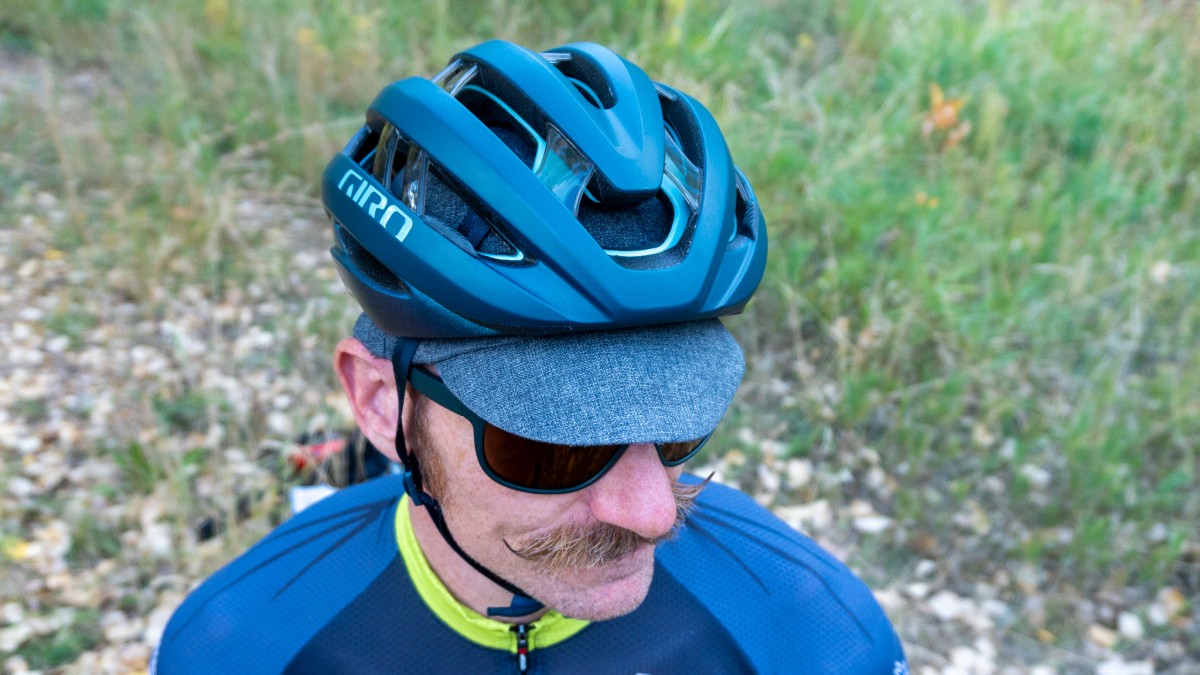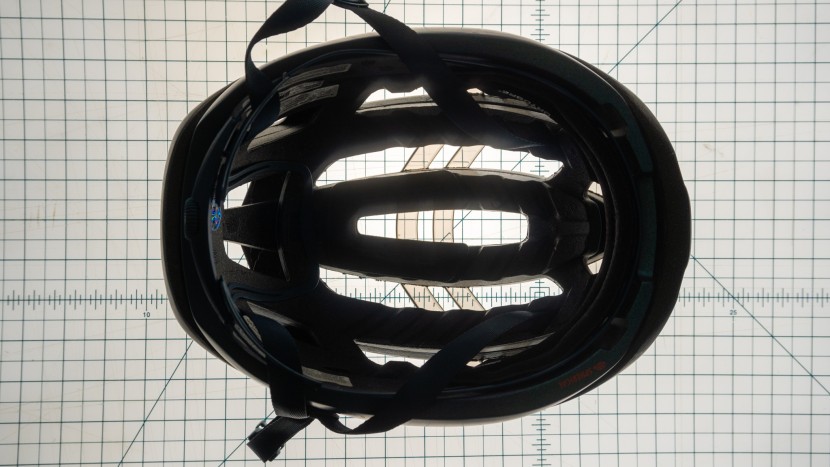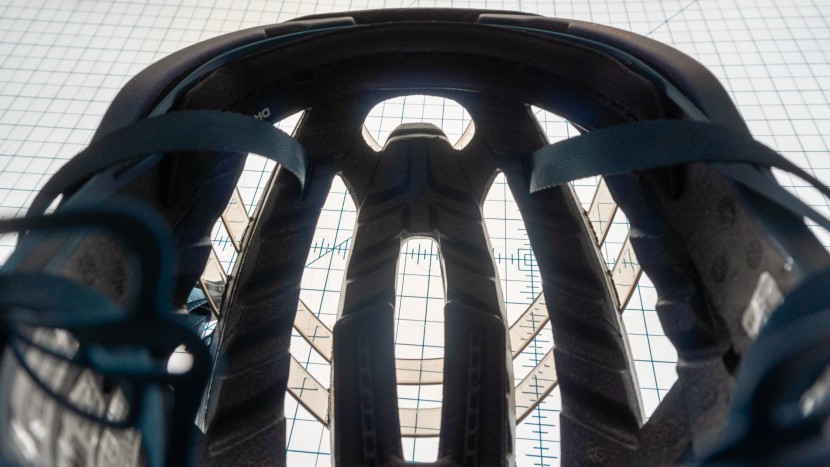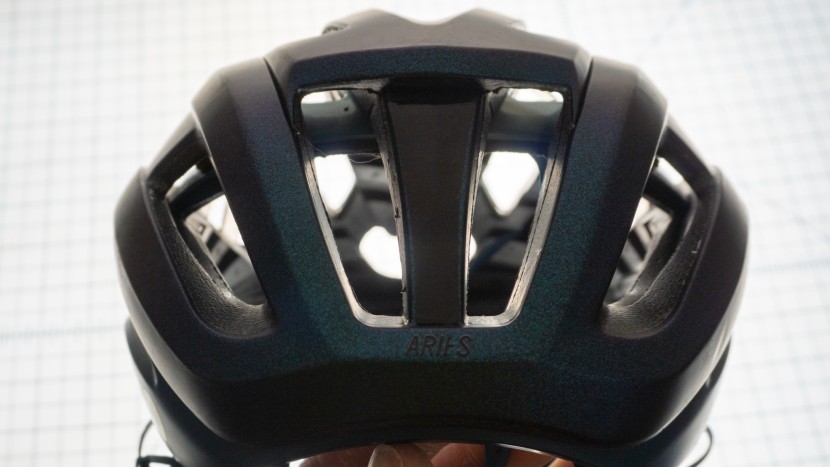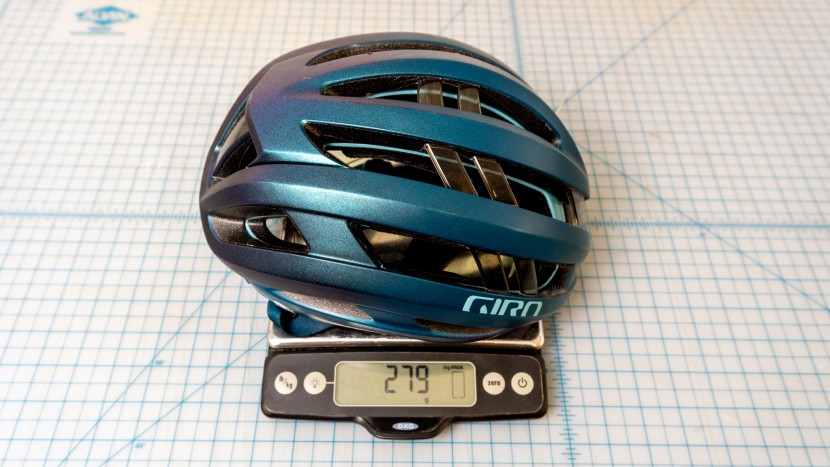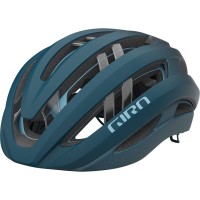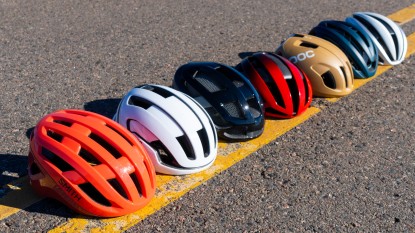Giro Aries Spherical Review

Our Verdict
Our Analysis and Test Results
Although we can't promise the Giro Aries Spherical will make you feel like the wind is always at your back when racing at the local Sunday crit. Or while trying to beat your own PR on the most infamous of local hill climbs, this helmet's generous vents and clever design details allow a ton of airflow onto your head, preventing you from feeling cooked even when the watts soar and your legs start to burn. The Aries is feather light and uber-comfortable. Your riding buddies may be jealous of how good it looks on you (handsome devil that you are), but you may simply forget you even have it on as it's engineered to rest snugly. Adjustable in a myriad of ways, but the straps and headband don't take an engineer to dial perfectly in. You'll be paying a premium, but the Giro Aries Spherical delivers on its promises of World Tour-class performance.
Impact Test
The Giro Aries Spherical complies with all federal safety requirements, but we wanted to know more, as the level of protection a helmet provides can be very different between different models. In our impact tests that surpass federal standards, the Aries Spherical scored slightly below average when compared to the rest. If you value impact protection above all else, other options offer superior impact test results.
Slow Impact Test Results
Test Results for the slow test put the Aries Spherical in the middle of the pack of all the helmets we had tested.
Fast Impact Test Results
Fast impact test results were more favorable, showing a higher score than the majority of helmets we tested.
Mips technology is deeply entrenched in the Aries Spherical in a way we don't usually see in many other helmets and is a big part of Giro's marketing. Rather than having a thin plastic liner near where the head rests on the inside, this helmet is built upon a ball-and-socket design, intended to allow the helmet body itself to slip and rotate independently of the head when a crash occurs.
It's a little unclear what if any additional benefits of the ball and socket design have over the plastic liner normally employed, so we're reticent to sing its praises too loudly, but we do speculate more helmets in the higher price range adopting this tech, even if the only extra benefit is a slightly lighter weight for the design and well, it does looks pretty cool.
Comfort
It's no mean feat to make a rigid foam protection hat feel extra comfortable, but that's just what Giro has done with the Aries Spherical. Light weight and excellent ventilation really are just the beginning of its comfort story. The wrap-around headband seems custom-made for our tester's own head — without pinch points — making the helmet easy to forget it's even on. Tighten it down using the adjustment nob at the back, and you may also forget to clip down the chin strap; the hold is already firm enough to prevent the helmet from tipping side to side all on its own.
Padding on the interior of the helmet is very minimal — just a little on the forehead and on the top — and with the Mips tech moved away from the inside face of the helmet onto the helmet body itself, there's no plastic liner to be a potential annoyance. The Giro Aries Spherical makes a perfect choice of a helmet for those who usually loathe using one because of sensory issues. This helmet is available in three sizes: S, M, and L; from 51-63cm in circumference, as well as in about a dozen different colorways.
Ventilation
Exceptional air circulation through the helmet is the absolute stand-out feature of the Giro Aries Spherical. Just a casual look at the helmet would have you convinced it must be made up of approximately 50% empty space, with long vents that run fore to aft complemented with raised, stiff bridges that attach laterally for added integrity to the helmet's structure. Those bridge pieces are made of clear plastic, further heightening this illusion of weightlessness. It's up for debate given the design, but charitably we count 21 vents in total — including a center vent hole at the front of the helmet itself. This helmet was designed for hot summer days and never-ending climbs up into the mountains in mind.
The Mips Spherical tech utilized on the Aries also means that there isn't a plastic slippage layer on the interior of the helmet, usually found on Mips helmets, which could potentially buffer the airflow before it reaches your head.
Small channels are also cut into the protective foam layer on the interior everywhere that padding is absent, facilitating airflow underneath the helmet where vents aren't present above, effectively floating the helmet as much as is possible over the top of your head.
Usability
Strap it on, and go! The Giro Aries Spherical is not a finicky helmet. The Y-buckles under the ears easily adjust without needing to take the helmet off, and the under-the-chin snap does what it sets out to do. The headband dial adjusts well and can also be vertically adjusted in small increments. All but the vertical adjustment can be done with the helmet on and gloves on, preventing a stop during the group ride.
The sunglass garage is fairly minimal on the Aries, but the most outward vents do have little rubber nubbins that couldn't be for anything except holding fast to sunglass temples. Your head will still get slightly poked by the ends of the temples when they're “parked”.
Weight
For a helmet with so many baked-in features, the Giro Aries Spherical surprises us with its feather weight. Coming in at only 279 grams for a size Medium, it certainly is one of the lighter helmets we've tried out, although pretty in line with its more exclusive price point.
When examining the helmet, it's obvious that a ton of thought and engineering was put into the Aries to shed weight without compromising on features. For example, the headband is fully adjustable on top of the head, as well as using the dial in back near the occipital bone. Although weight was surely an important spec to this helmet's design, excellent ventilation seemed more of a priority, and the airiness of the design just lent itself to bring the weight down to that of angel's breath.
Should You Buy the Giro Aries Spherical?
If the admittedly high price doesn't turn you away, the Giro Aries Spherical is an excellent purchase of a critical piece of safety equipment. This helmet delivers on the value of its MSRP, leading the peloton in ventilation and comfort.
What Other Road Bike Helmets Should You Consider?
Many of the details that we love in this helmet can also be found in the Trek Velocis Mips, another high-end — and high-priced — wonder helmet. You'll find more padding in the interior than in most other helmets in this category. If ventilation is of importance to you but you can't quite swallow the price, the Giro Synthe Mips II also has excellent airflow, found at a less expensive price than its brethren.
| Awards | Best-In-Class Ventilation |
|---|---|
| Price | $350 List Check Price at Backcountry |
Overall Score  |
|
| Star Rating | |
| Bottom Line | For long rides, high temps, and epic mountain climbs, the beyond impressive ventilation found of this helmet will help keep your head cooler and drier |
| Pros | Industry-leading ventilation, sets solidly on head, good impact score |
| Cons | Expensive, minimal sunglass garage |
| Rating Categories | Giro Aries Spherical |
| Impact Test (30%) | |
| Comfort (20%) | |
| Ventilation (20%) | |
| Usability (15%) | |
| Weight (15%) | |
| Specifications | Giro Aries Spherical |
| Measured Weight | 279 g (Size M) |
| Size Range | 55-59cm (size M) |
| Number of Vents | 21 |
| Mips | Yes |
| Sizes Available | S, M, L |


